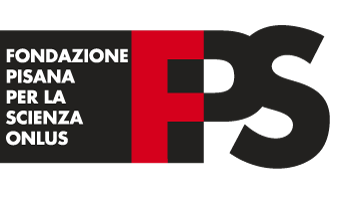Nanomedicine
Clinical research is increasingly shifting towards a deep mechanistic understanding of pathologies, and role of biomarkers in the signalling of altered states is actively investigated both from a diagnostic and therapeutic perspective. Identification and quantification of patient-specific biomarkers will be a key factor in the ongoing transition from evidence-based to personalized medicine and could boost our capability to diagnose pathologic states at their earliest stages.
Nanotechnology is emerging as an invaluable tool, both in academic and pharmaceutic environment, to overcome current selectivity and specificity bottlenecks in terms of biomarker recognition, signalling, and targeting. The possibility to fine-tune nanomaterial size, surface decoration, and optical properties makes them an incredibly flexible tool to address current challenges in life sciences.
Application of nanotechnology to life sciences spans from the development of smart, selective fluorescent reporters for microscopy to the engineering of new nanoarchitectures for ultrasensitive detection of biomarkers in vivo. From a therapeutic perspective, application of nanotechnology-based tools is gaining increasing attention especially in those fields where crossing a biologic barrier is a key requisite to exploit therapeutic activity (e.g. in delivery of biomolecules to the brain), and some nanostructured drugs already have already reached clinical stage.
Nanomedicine laboratory is focused on the engineering of novel approaches to improve biomarker recognition, quantification, and localization, including evaluation of their interaction with cells and tissues. This involves two interconnected activities:
– Design of triggerable biosensors for detection of trace levels of circulating biomarkers
– Identification and characterization of the heterogeneity, at micro and nanoscale, of physiologic and pathologic tissues, by time-resolved and super-resolution confocal microscopy
Nanomedicine facility is fully equipped with instruments to synthesize, purify, and characterize organic and inorganic nanomaterials, and with two state-of-the-art fluorescence microscopy setups
Main instruments
Asia Syrris flow chemistry system. This instrument is equipped with a flow reactor for controlled production and derivatization of nanomaterials. The system can operate at pressures up to 20 bar, temperatures between -15 and 150 oC, and flow rates between 5 and 2500 L/min, with two pressurized inlets and automated fractionation of the reaction products. Reaction conditions can be varied during process to perform screening reactions or kept constant to produce biomaterials with excellent reproducibility.
HPLC/DLS Separations at analytical or semipreparative scale can be performed on a Dionex HPLC system equipped with autosampler, thermostated column oven, PDA detector, and fraction collector. The system can be interfaced with a Dynamic Light Scatter system (Zetasizer nano, Malvern) for size and Zeta potential determination of nanomaterials. The DLS can be used as a stand-alone system to perform analyses with full temperature control in the 10-80 oC range.
UV-VIS spectrophotometer and fluorimeter. Optical characterization of fluorescent or absorbing samples can be performed on a Cary Eclipse fluorimeter and on a Cary 3500 UV-VIS spectrophotometer (190-1100 nm range).
Time-resolved confocal microscope. The Olympus FV3000 setup is equipped with incubator for live cell imaging, four laser lines (405-488-561-640nm) and four spectral detectors (two GaAsP and two conventional PMT). The microscope is interfaced with a Picoquant setup (Multiharp150) for FLIM, equipped with three laser lines (372, 405, and 470nm) and two detectors. The system is suitable for single photon label free imaging and equipped with filter sets for the most common fluorophores.
Super-resolution microscope. A Nikon TiE microscope interfaced with a confocal A1 head (four laser lines: 405-488-561-640nm) and spectral detector able to simultaneously acquire up to 32 discreet spectral bandwidths of data in one acquisition. The microscope is also equipped with a STORM-TIRF setup for super-resolution imaging using 405 and 640 nm excitation.
Nanomedicine laboratory is directed by Giovanni Signore
